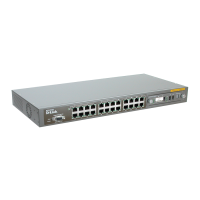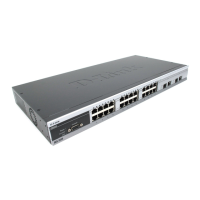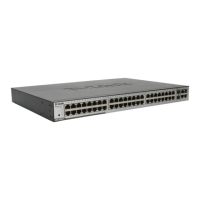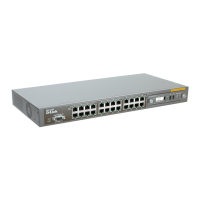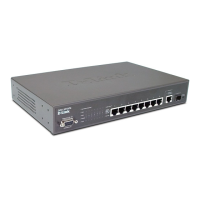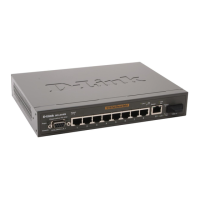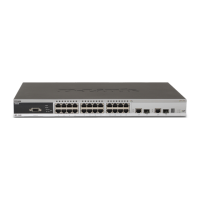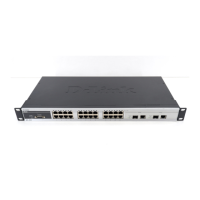10/100 Fast Ethernet Switch User’s Guide
46 Using the Console Interface
Setting up the Switch
This section describes the settings you will need to change to allow
you to be able to manage the Switch from an SNMP-based
Network Management System such as D-View, SNMP-View, or to
be able to access the Switch using the TELNET protocol.
TCP/IP Settings
The Switch needs to have a TCP/IP address assigned to it so that
the network management system or TELNET client can find it on
the network. The TCP/IP Parameters Configuration menu
allows you to change the settings for the two different interfaces
used on the Switch: the Ethernet interface used for in-band
communication, and the SLIP interface used over the console port
for out-of-band communication.
Each of the fields on this menu takes effect the next time the
system is restarted. Fields that can be set include:
♦ IP Address: determines the IP address used by the Switch
for receiving SNMP and TELNET communications. Should
be of the form xxx.xxx.xxx.xxx, where each xxx is a number
(represented in decimal) between 0 and 255. This address
should be a unique address on a network assigned to you by
the central Internet authorities. The same IP address is
shared by both the SLIP and Ethernet network interfaces.
♦ Subnet Mask: bitmask that determines the extent of the
subnet that the Switch is on. Should be of the form
xxx.xxx.xxx.xxx, where each xxx is a number (represented in
decimal) between 0 and 255. If no subnetting is being done,
the value should be 255.0.0.0 for a Class A network,
255.255.0.0 for a Class B network, and 255.255.255.0 for a
Class C network.

